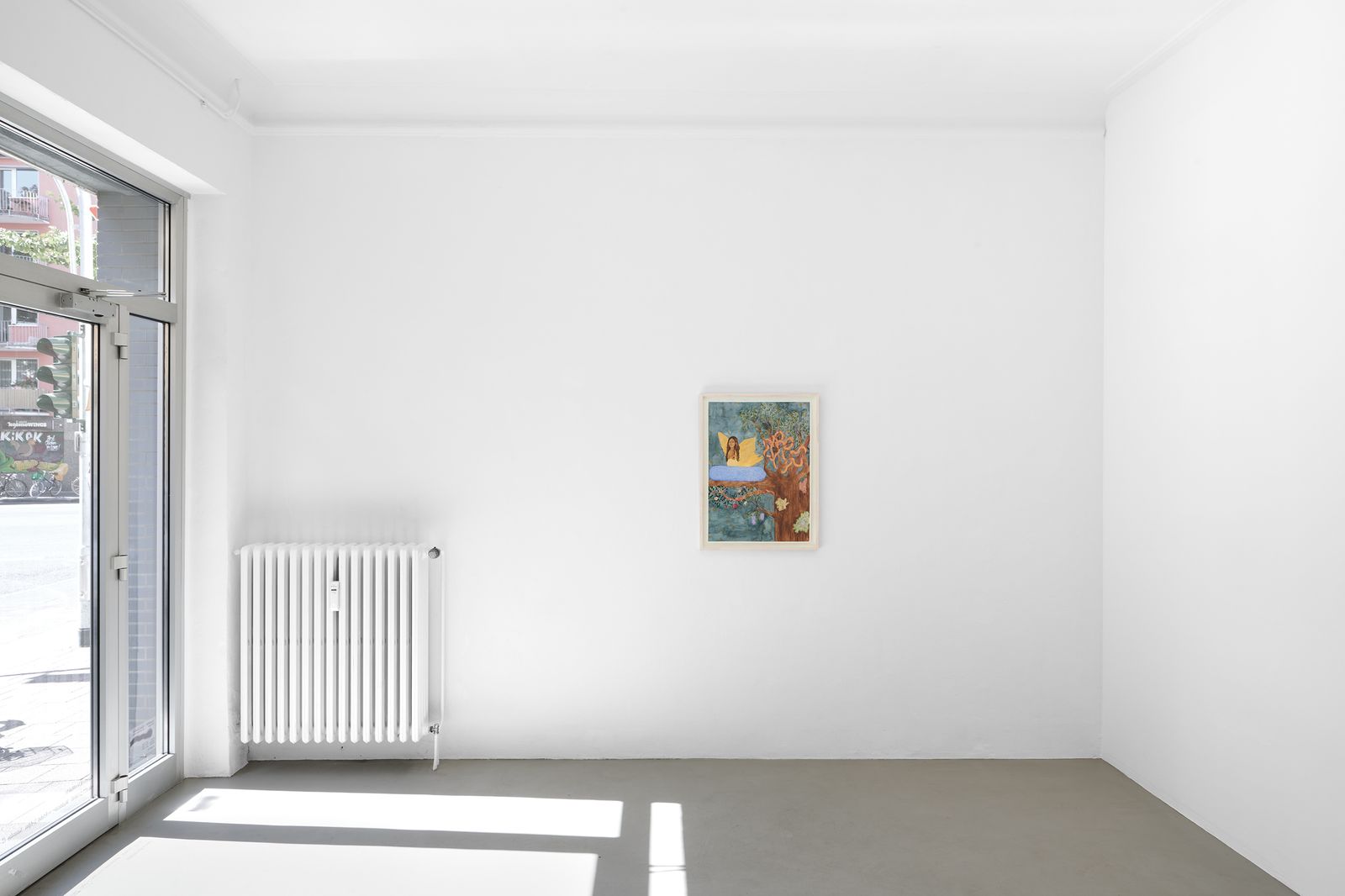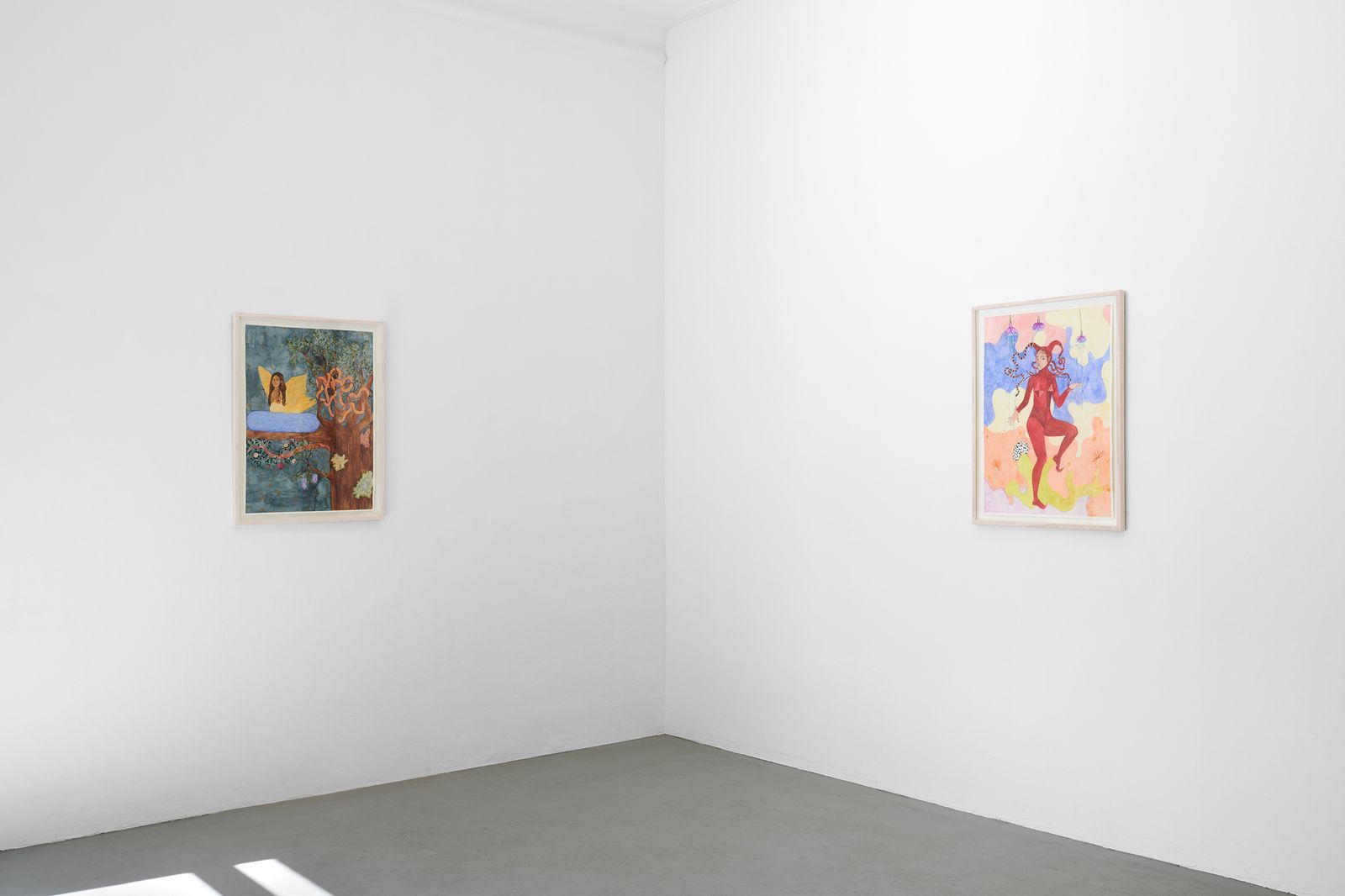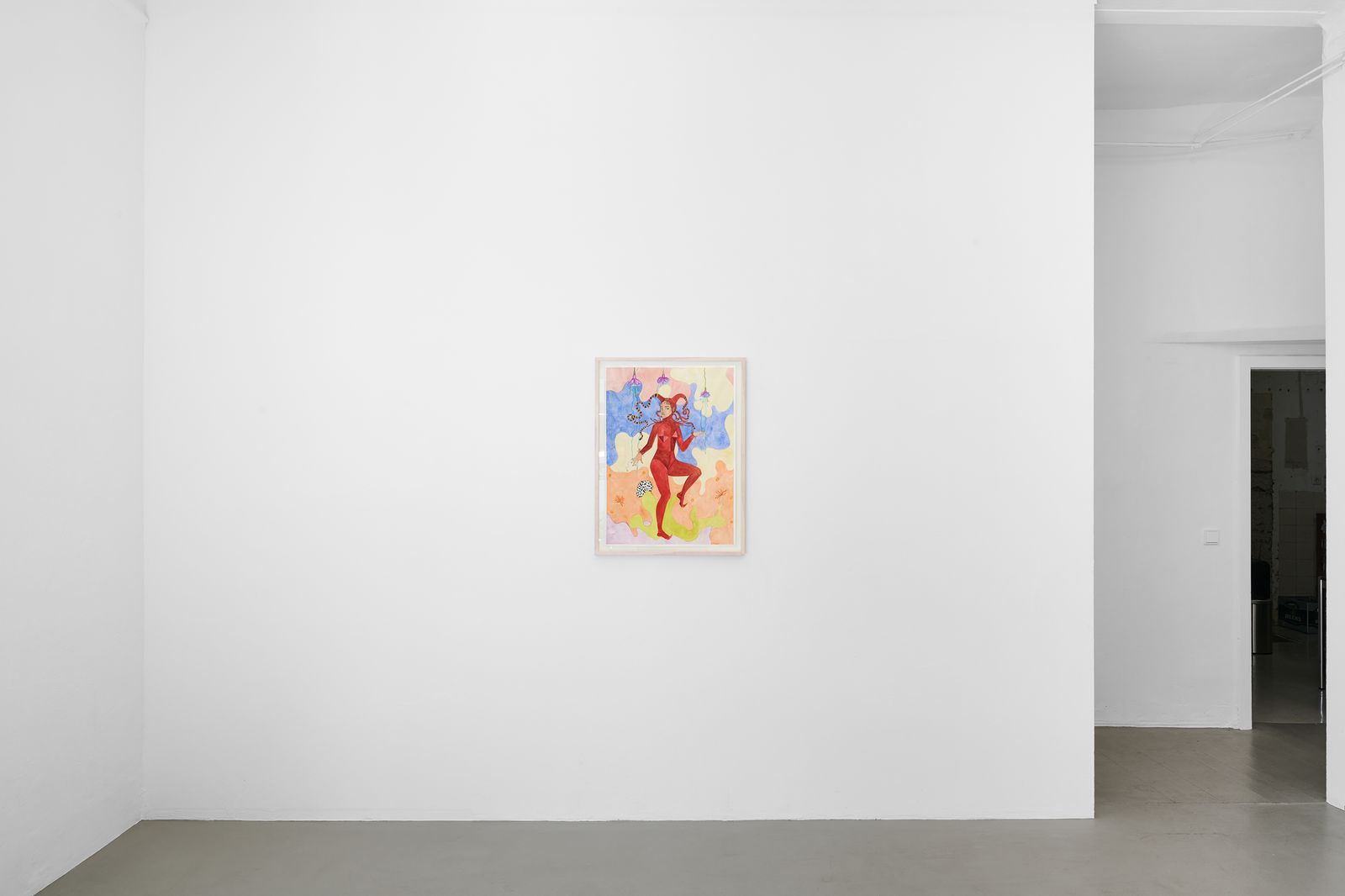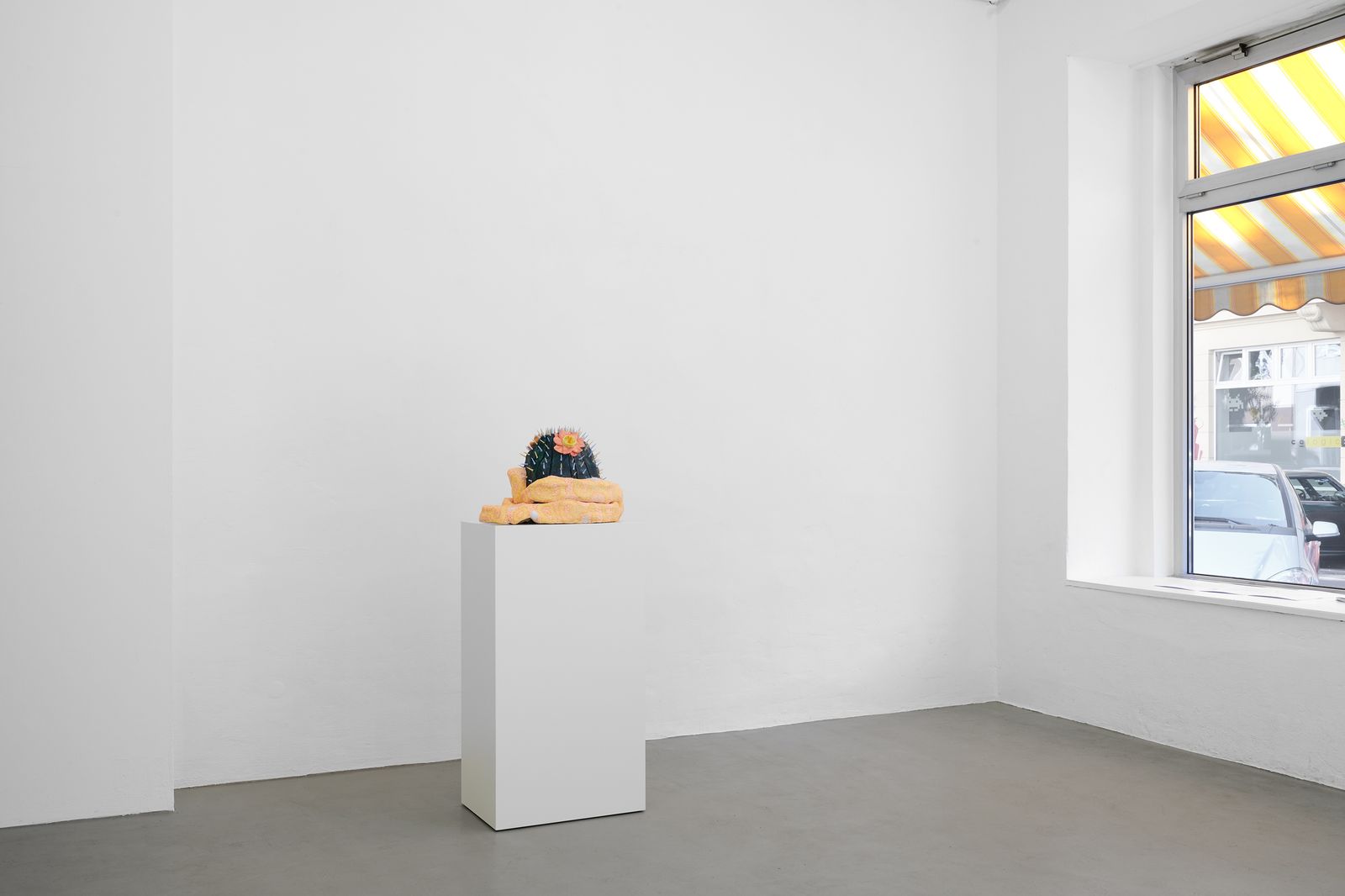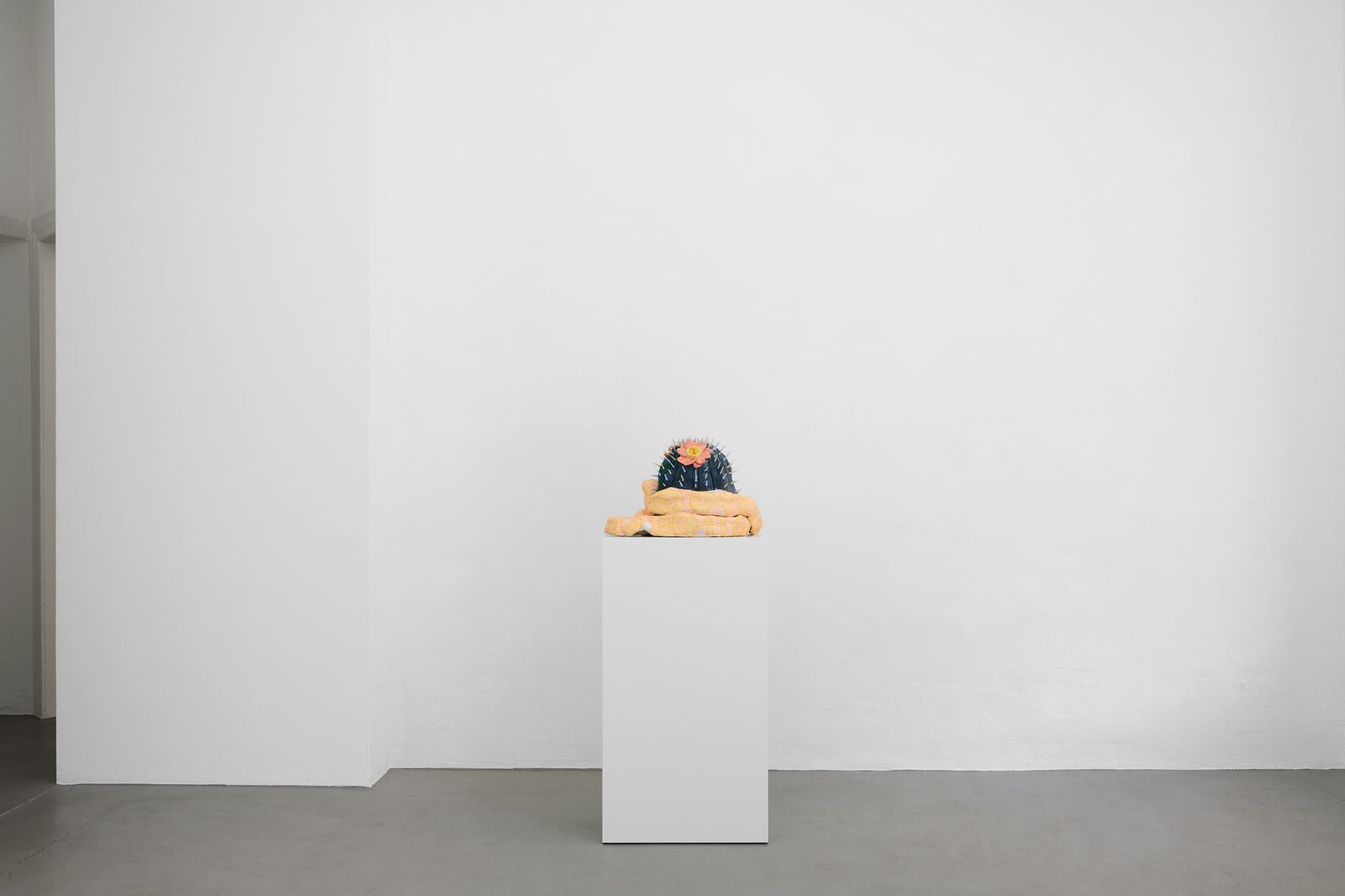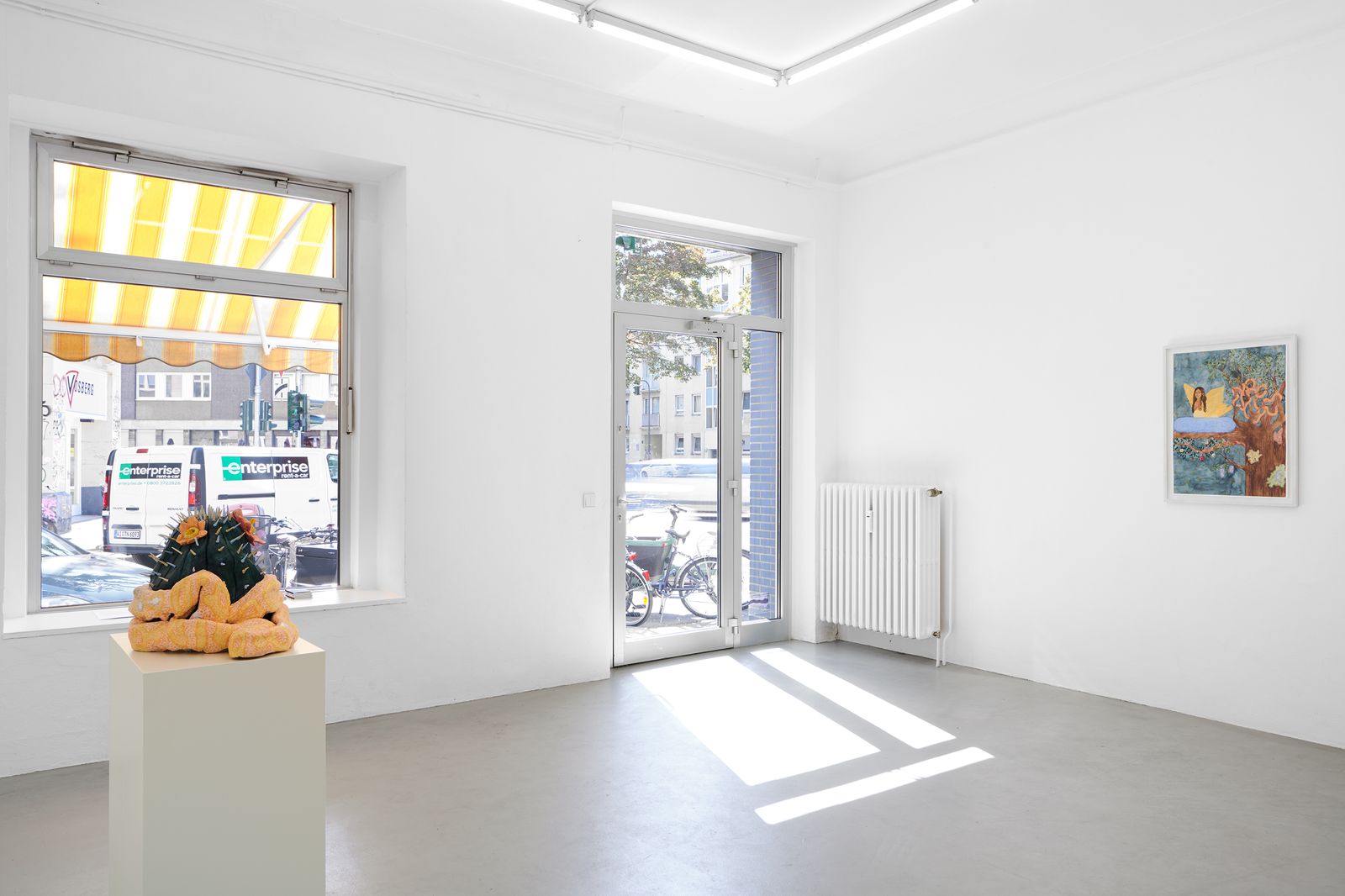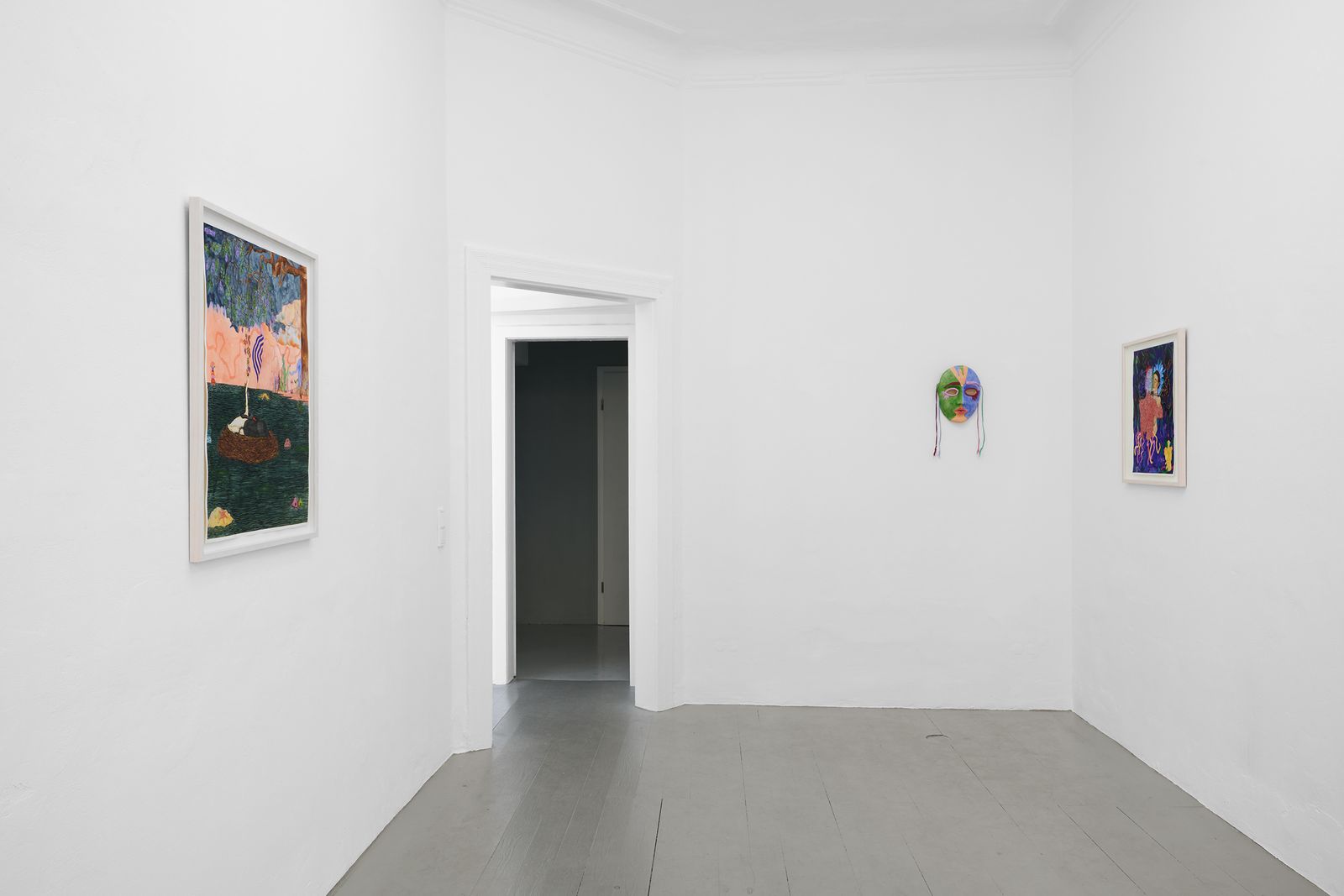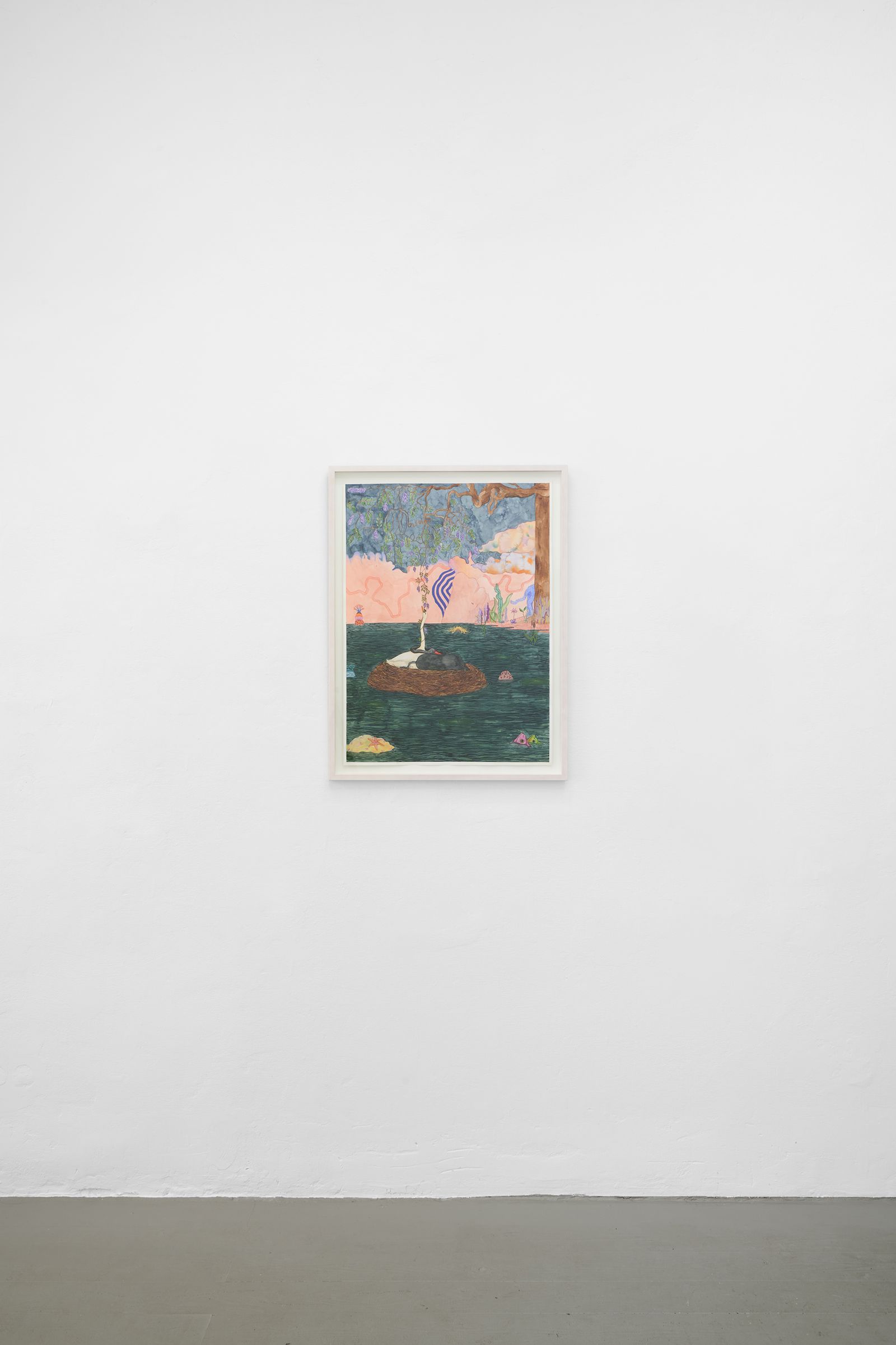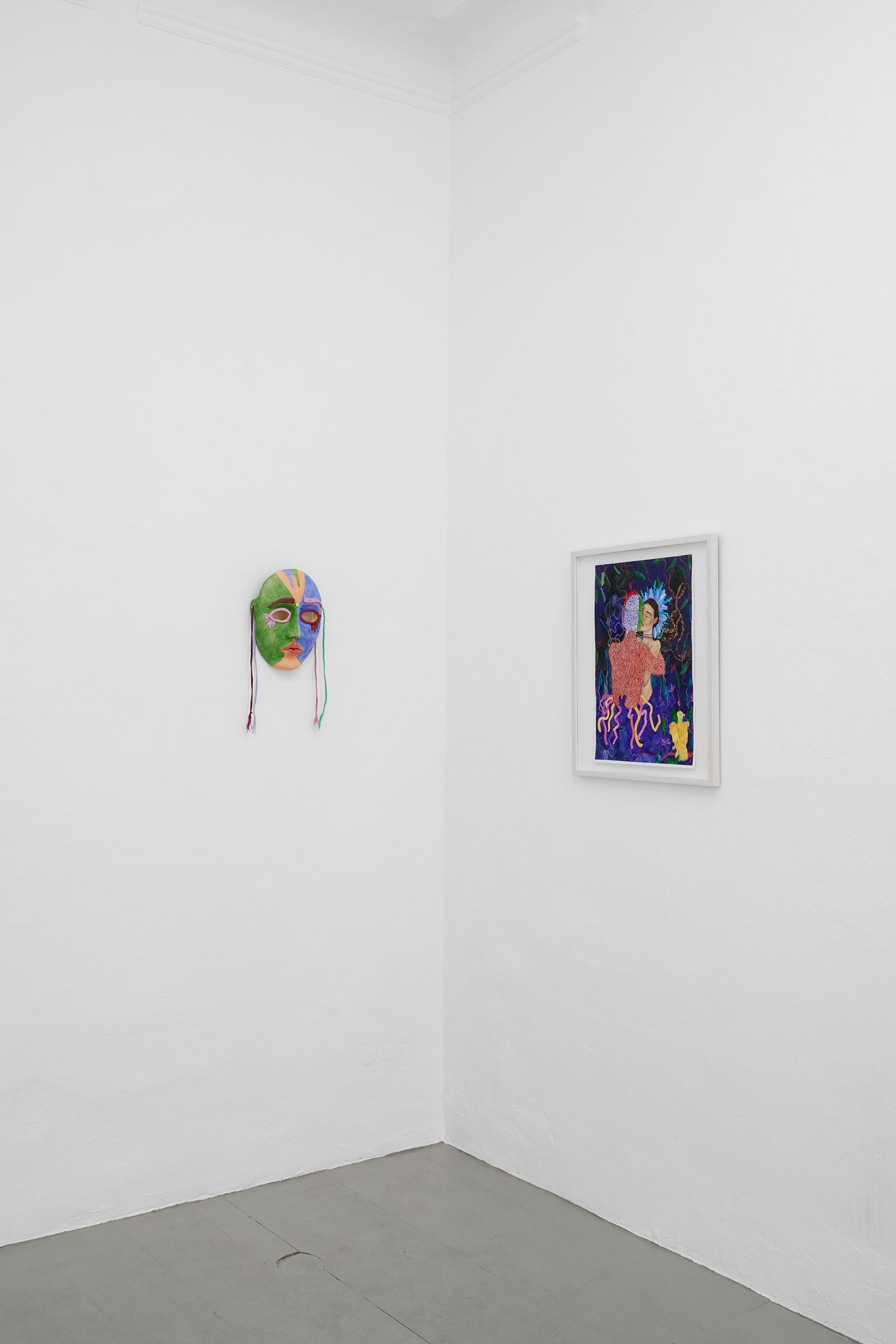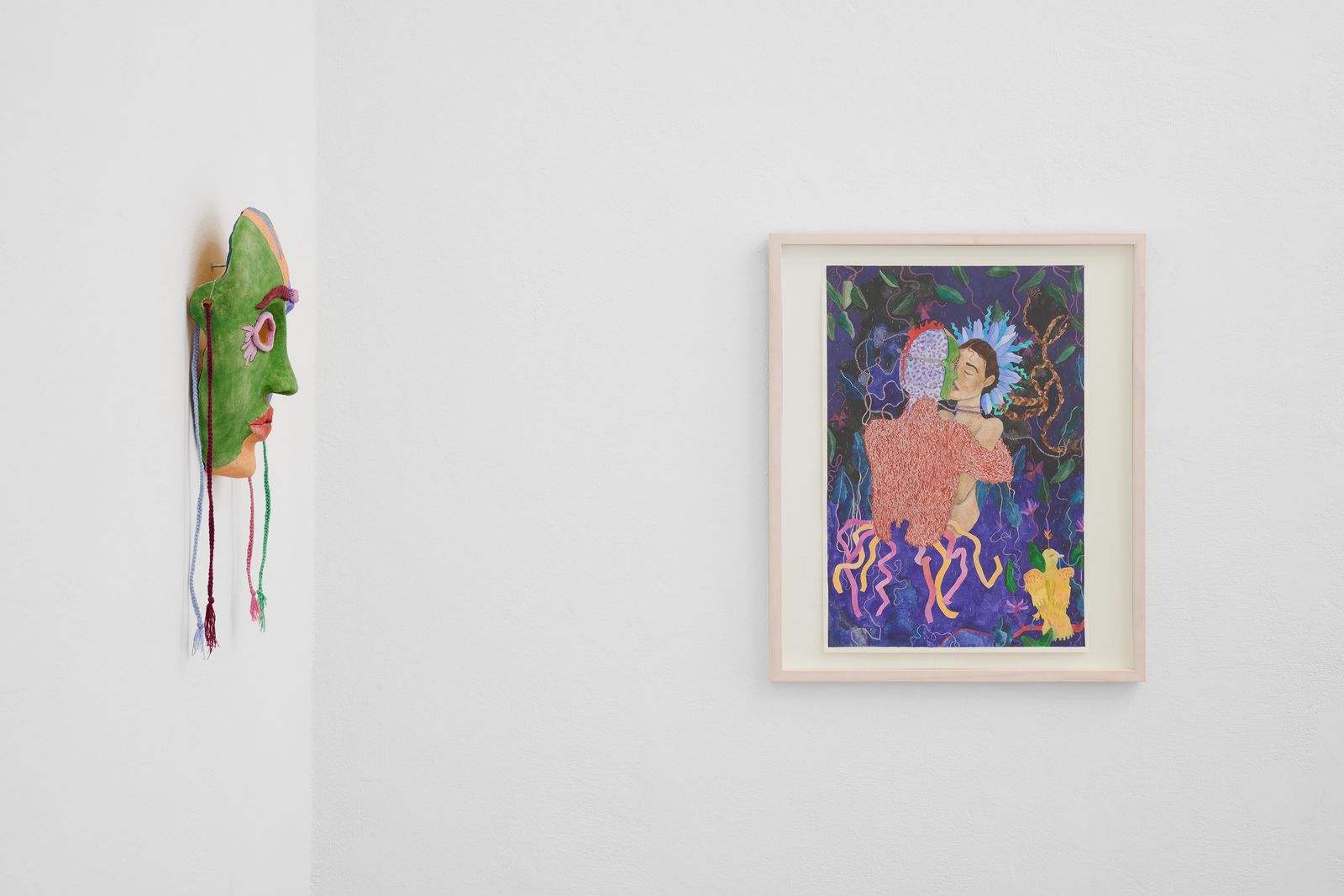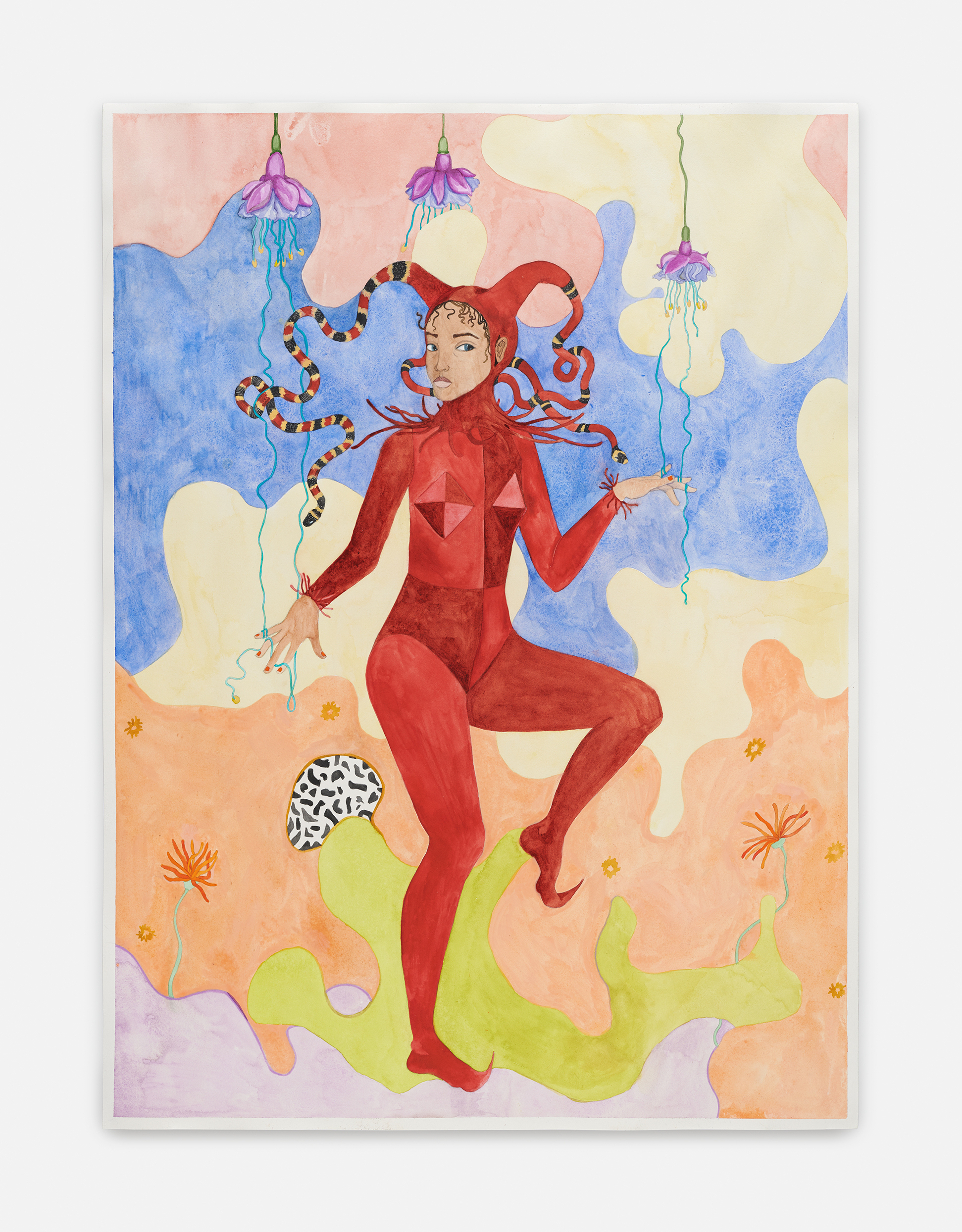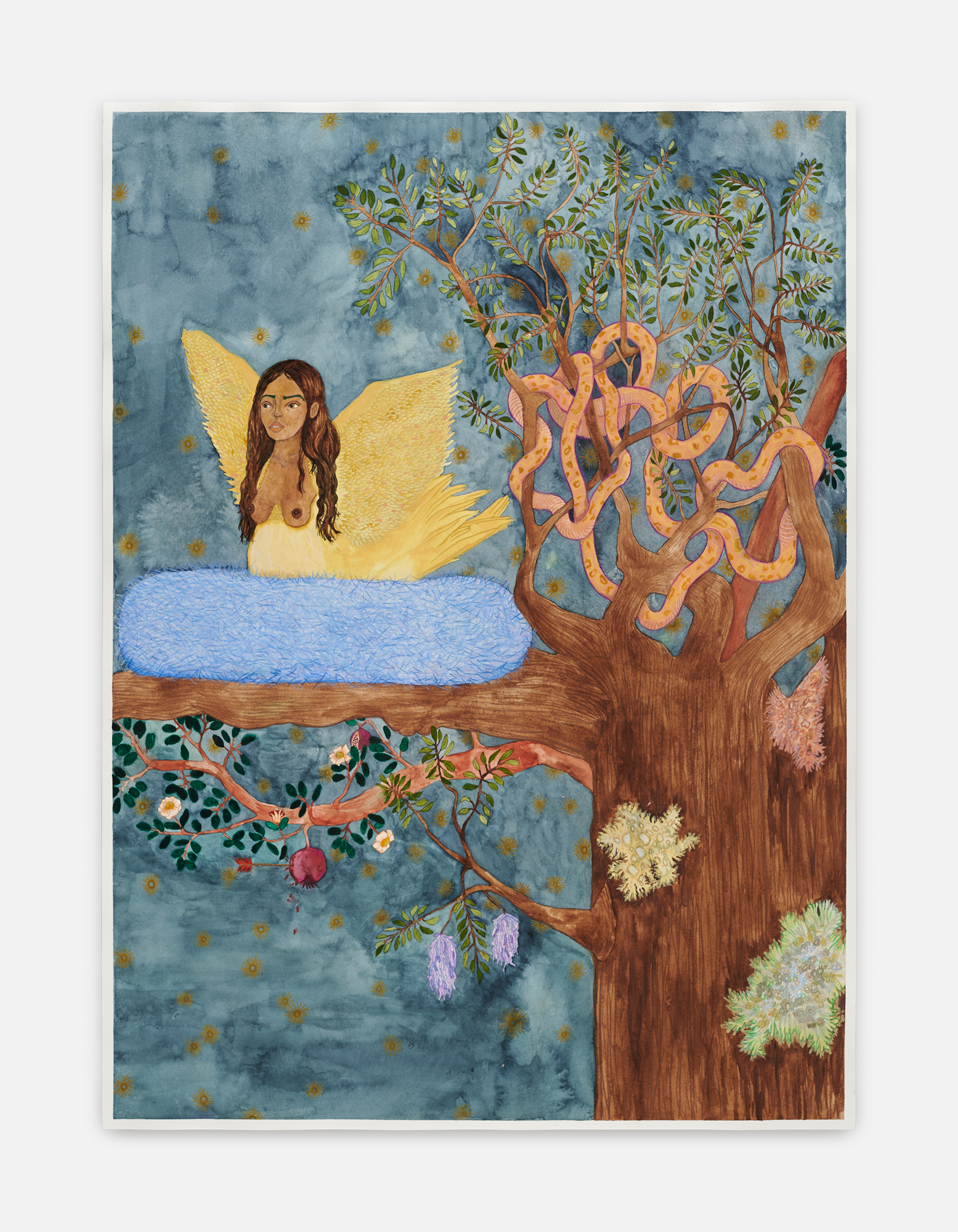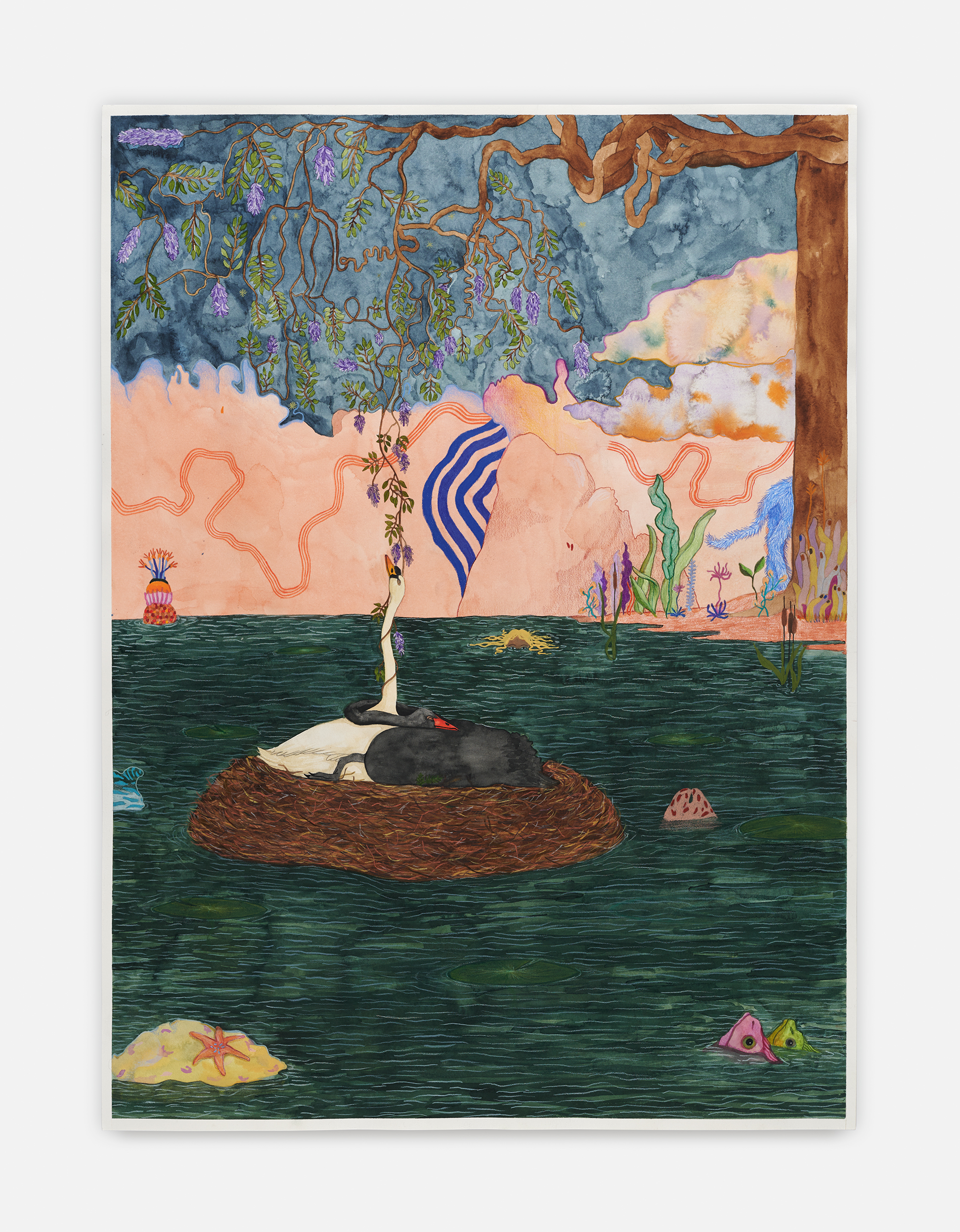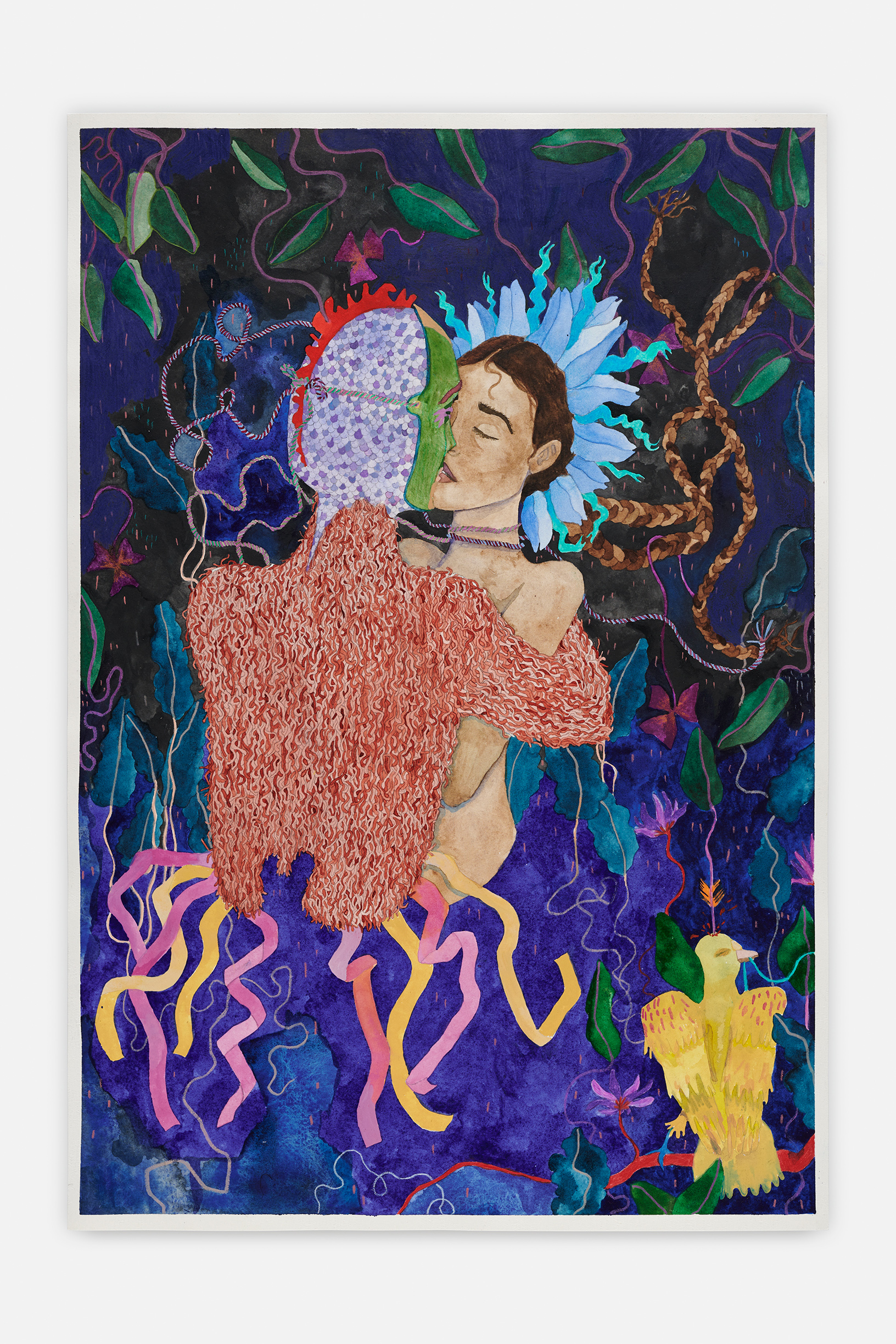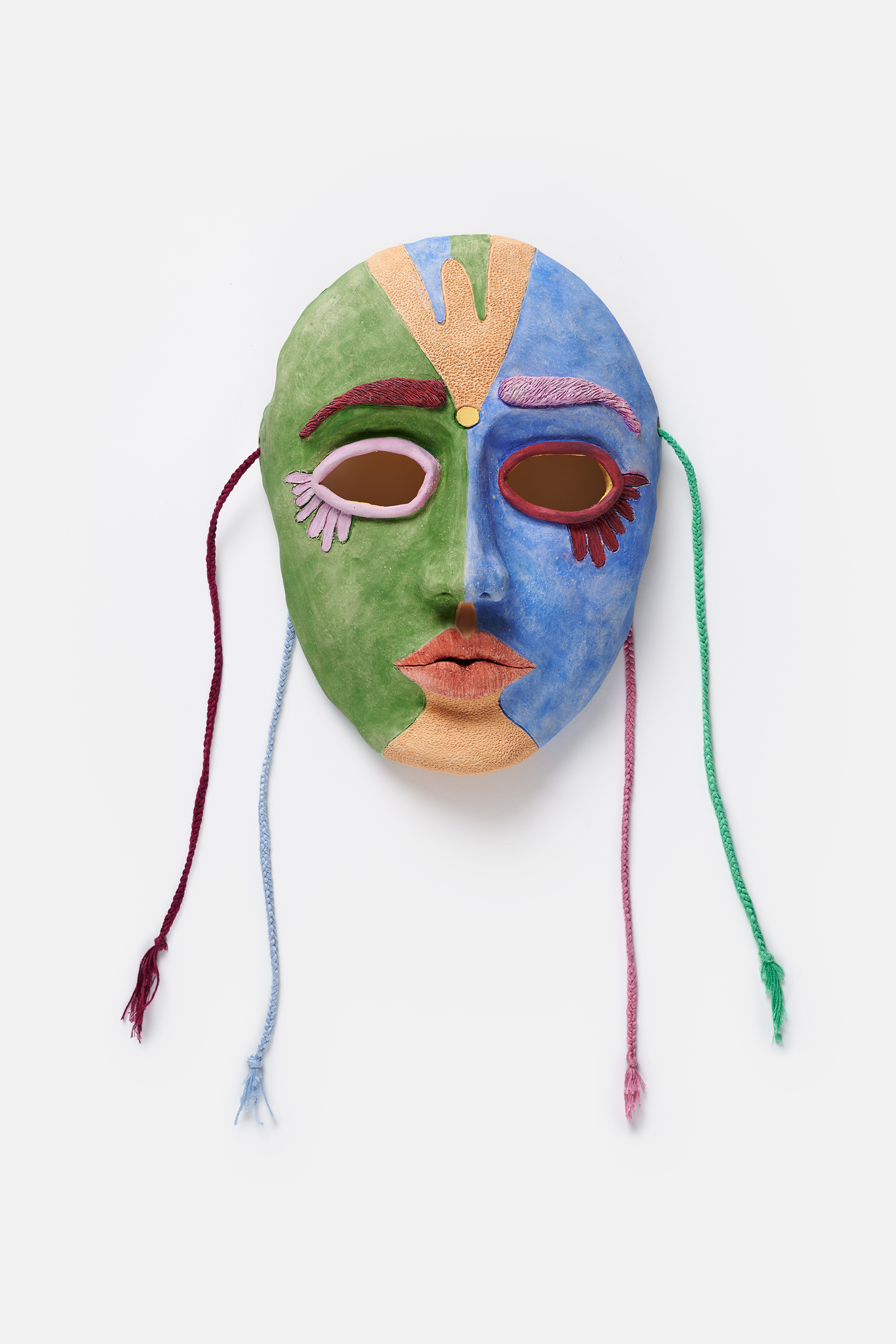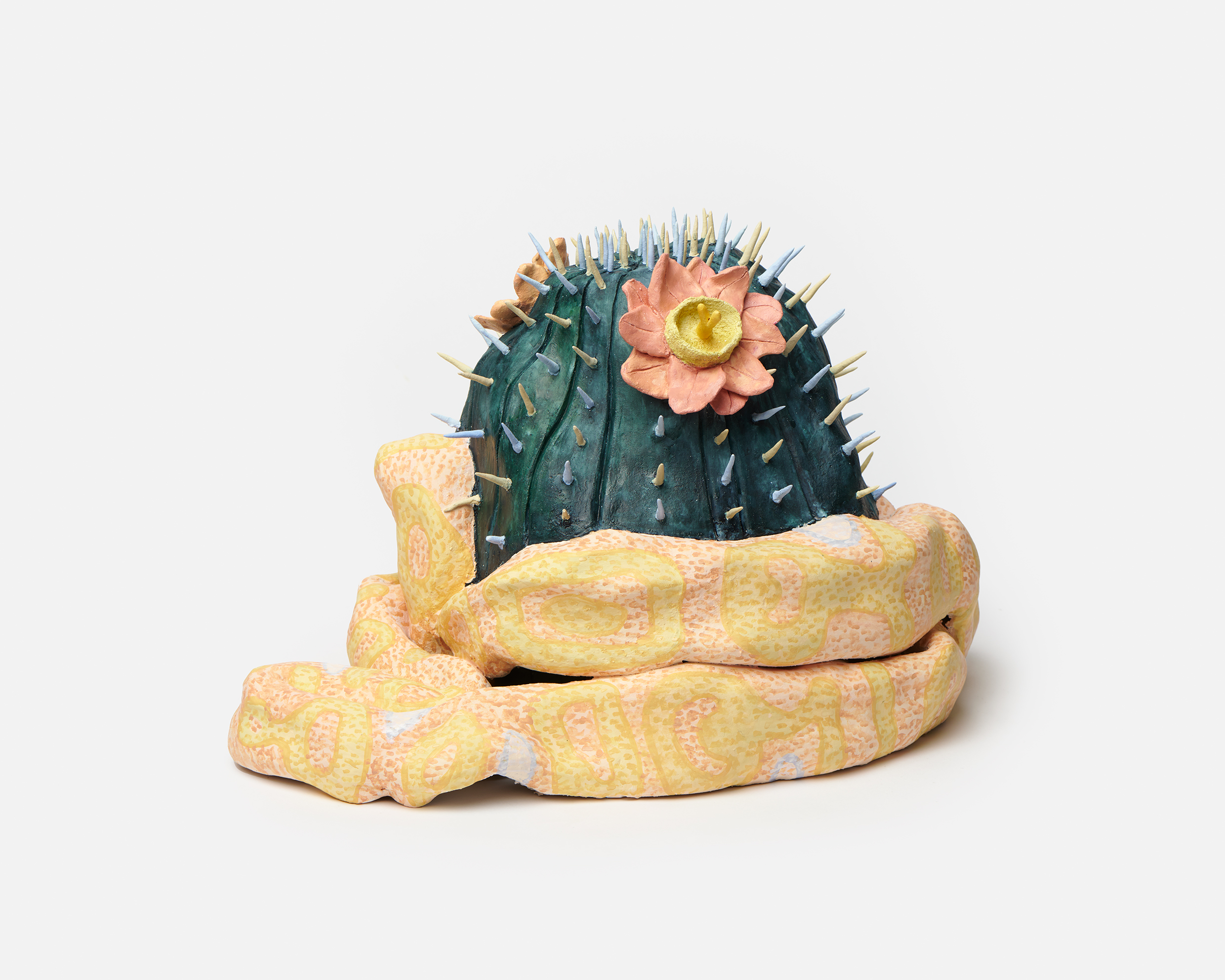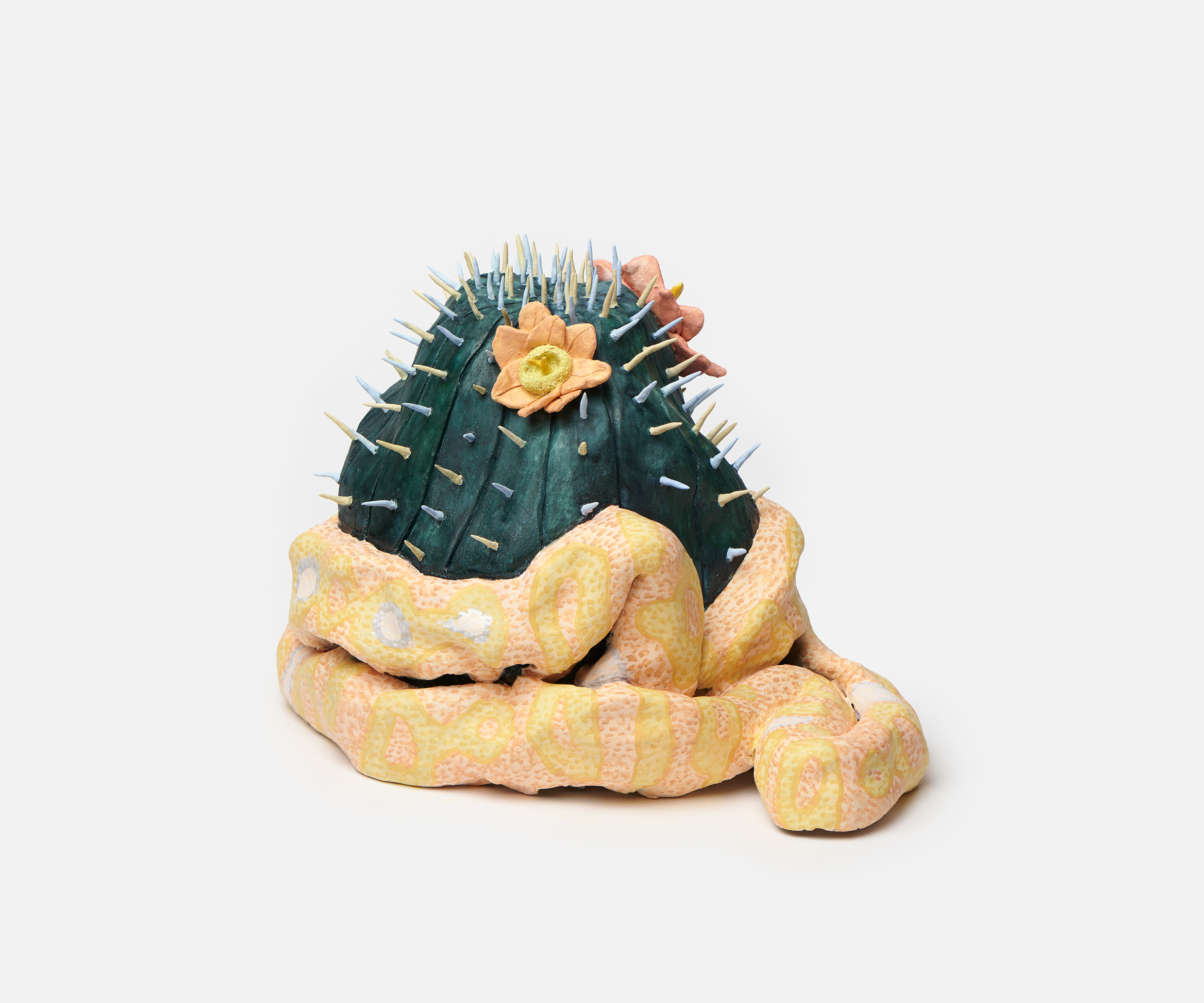–
„Blut und Nektar“
Installation Views
Video
Works
Press Release
“What do you do when your world starts to fall apart?” asks Anna Lowenhaupt Tsing in The Mushroom at the End of the World. “I go for a walk, and if I’m really lucky, I find mushrooms. Mushrooms pull me back into my senses, not just—like flowers—through their riotous colors and smells but because they pop up unexpectedly, reminding me of the good fortune of just happening to be there. Then I know that there are still pleasures amidst the terrors of indeterminacy.”1
In her first exhibition at Galerie Khoshbakht, Saya Schulzen presents new drawings and ceramic sculptures under the title of “Blut und Nektar”.
A red harlequin, her medusa-like head crowned by snakes (a venomous harlequin coral snake and the kingsnake that mimics her), in a play of threads with hanging blossoms, that feed her nectar. A siren in a blue nest, the tree inhabited by snakes, lichens and a blood-red pomegranate. Two swans, black and white, their necks tightly entwined—with each other and the wisteria. An abundance of anemones, a starfish, a pair of fish, corals and anthozoas in and around the water. A snake in an intimate embrace with a cactus—danger and protection at once.
Saya Schulzen’s allegorical works feature symbols and figures from Greek mythology, iconography and, influenced by her own diasporic biography, indigenous cultures. They tell of a sensorial world, in which man and nature no longer move in dual, hierarchical structures, but coexist in close bond and, like a fungus, enter into symbioses.
“On a geological scale, we have all arisen out of the same primordial soup, gestated by species upon watery species that have gifted their morphology to new iterations and articulations.”2
Morphing between species and entities, the life juices flow perpetually.
Miriam Bettin
1Anna Lowenhaupt Tsing, The Mushroom at the End of the World, Princeton 2015, S.1
2Astrida Neimanis, Hydrofeminism: Or, On Becoming a Body of Water, in: Undutiful Daughters: Mobilizing Future Concepts, Bodies and Subjectivities in Feminist Thought and Practice, Hg. Henriette Gunkel, Chrysanthi Nigianni, Fanny Söderbäck, New York 2012, S. 99.
